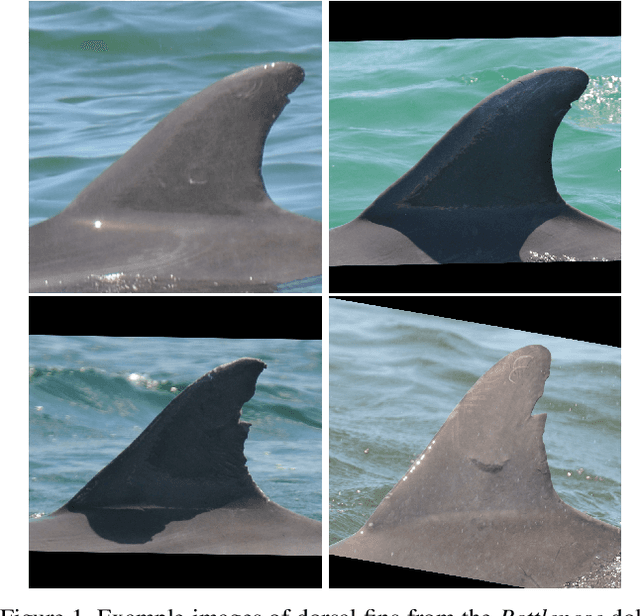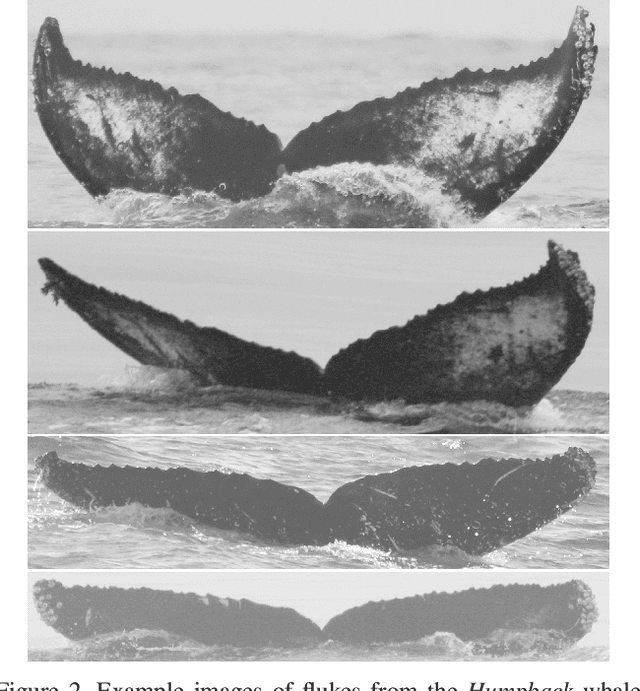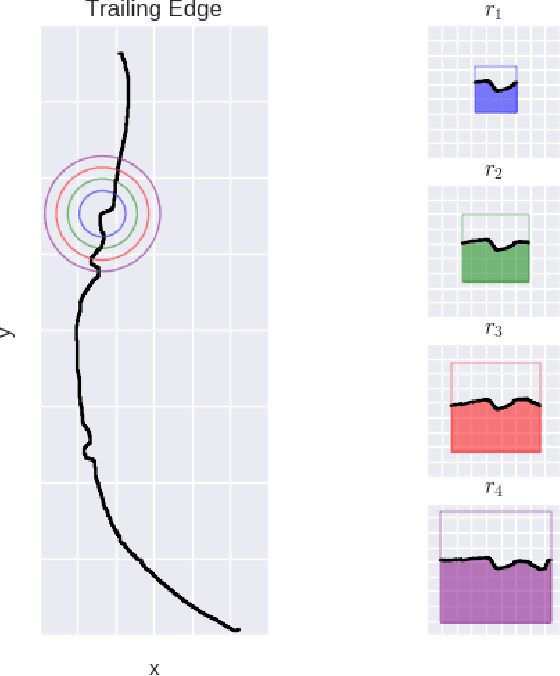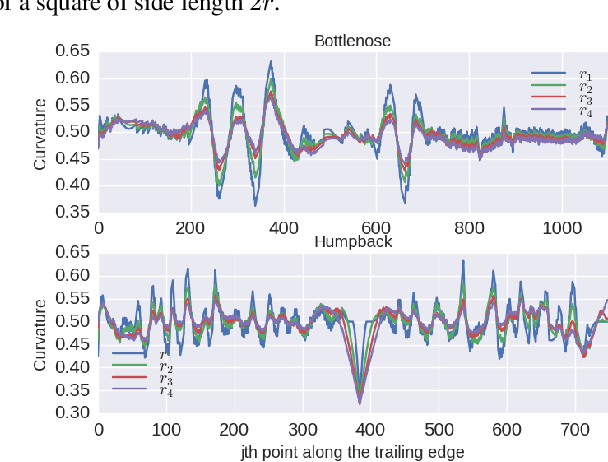Integral Curvature Representation and Matching Algorithms for Identification of Dolphins and Whales
Paper and Code
Aug 25, 2017



We address the problem of identifying individual cetaceans from images showing the trailing edge of their fins. Given the trailing edge from an unknown individual, we produce a ranking of known individuals from a database. The nicks and notches along the trailing edge define an individual's unique signature. We define a representation based on integral curvature that is robust to changes in viewpoint and pose, and captures the pattern of nicks and notches in a local neighborhood at multiple scales. We explore two ranking methods that use this representation. The first uses a dynamic programming time-warping algorithm to align two representations, and interprets the alignment cost as a measure of similarity. This algorithm also exploits learned spatial weights to downweight matches from regions of unstable curvature. The second interprets the representation as a feature descriptor. Feature keypoints are defined at the local extrema of the representation. Descriptors for the set of known individuals are stored in a tree structure, which allows us to perform queries given the descriptors from an unknown trailing edge. We evaluate the top-k accuracy on two real-world datasets to demonstrate the effectiveness of the curvature representation, achieving top-1 accuracy scores of approximately 95% and 80% for bottlenose dolphins and humpback whales, respectively.
 Add to Chrome
Add to Chrome Add to Firefox
Add to Firefox Add to Edge
Add to Edge